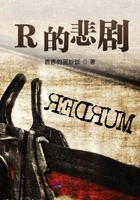"Suppose we have another chat about plants to- night, Norah," said Fred. "Let us try again to think of some of our early lessons. We will begin with the root. Shall we?
"The root, you know, is that part of the plant which makes its way down into the soil. It has to hold the plant firmly in the ground, and supply it with earth-food from the soil.
"Some plants have fibrous roots. The fibers spring from the stem, and spread downwards through the soil. Grass and grain have fibrous roots, and so have all plants thatdie down ever y year. Such plants are called Annuals. We sow the seeds for them in the spring.
"Other plants have thick, fleshy tap-roots. These live for two seasons, and called Biennials. The tap- root is a sort of storehouse of food for the plant, to feed it when it wakes up after its winter sleep.
"Trees and shrubs live for many years, and are called Perennials. They have fibrous roots, but these fibres are really thick and woody.""You must remember, Norah," said Willie, "that, whatever the class of root may be, the actual feeders are the delicate root-hairs. These root-hairs are absorbent, and absorb the dissolved earth-food from the soil.""Take the stem next," said Fred. "This is the part of the plant which grows upwards into the air, and bears the leaves and flowers. But I want you to think only of the leaves now. Can you tell me the different parts of a leaf, Norah?""Let me see," said Norah. "It has a footstalk and a blade; the ribs and veins spread through the blade.
"Oh, and I remember, too, that the surface of the leaf is closely set with breathing pore," she added.
"You must remember," said Fred, "that the foot- stalk, ribs, and veins all form channels for the upward flow of the earth-food. And now I want you to think of something else. What becomes of the carbonic acid gas which is always being formed, in the air?""Oh, I know," said Norah. "The plants take it in. Then I suppose it is the carbonic acid gas that is absorbed by the breathing pores of the leaves.""Yes, it is," said Fred. "The breathing pores absorb carbonic acid gas from the air. In the leaves this gas is broken up. The plant takes for its own use a part of it, which we call carbon or charcoal,and breathes out the rest to the air again. The carbon is absorbed by the sap, which now becomes air-food as well as earth-food, and is carried away into all parts of the plant."SUMMARY
All annuals have ?brous roots. Biennials live for two years, and only ?ower in the second; they have ?eshy tap-roots, which are meant to serve as a store of food, for the plant to live upon. Trees and shrubs live for many years, and are called perennials. They have fibrous, woody roots. The leaf consists of a foot- stalk and a blade. Ribs and veins spread through the blade, and its surface is set with breathing-pores. The stem, the foot-stalk, the ribs, and the veins carry up the sap. The breathing- pores suck in carbonic acid gas from the air. The sap takes carbon from this gas to feed the plant.
Lesson 49















